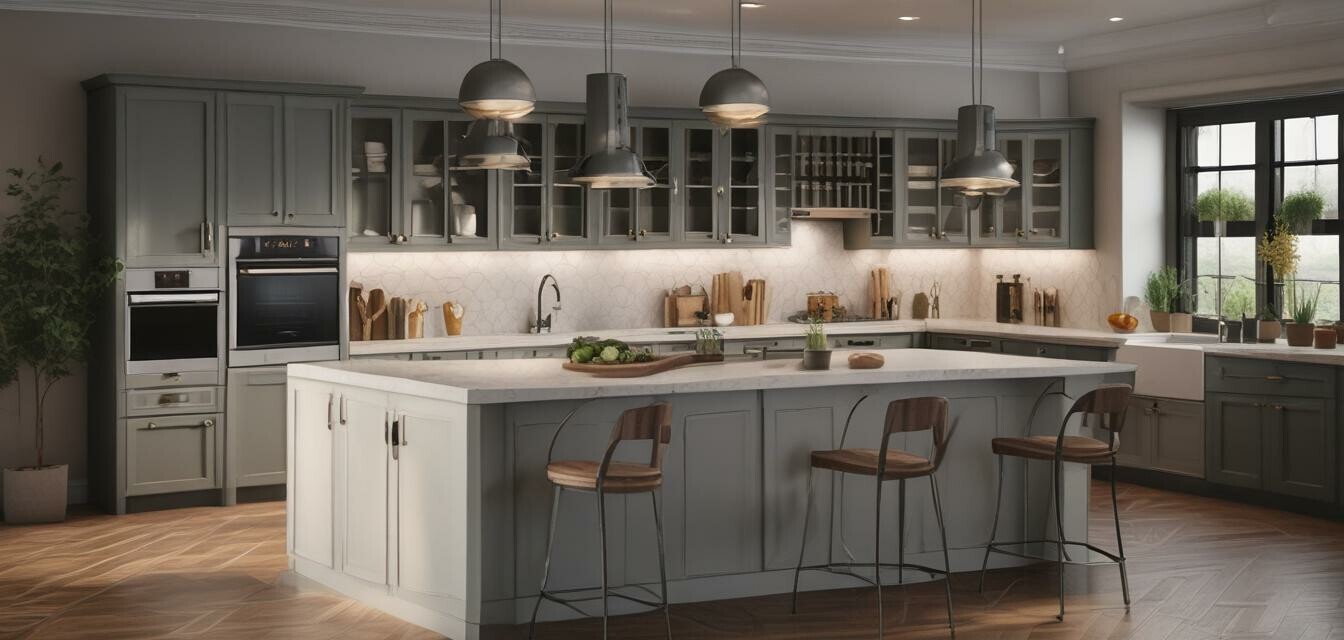
The Impact of Augmented Reality on Kitchen Design
Key Takeaways
- Augmented Reality (AR) enhances the kitchen design process by providing visualizations in real-time.
- AR tools allow homeowners to experiment with layouts, materials, and appliances before finalizing designs.
- Technology is making kitchen renovations more efficient, saving time and reducing costs.
- AR applications improve customer engagement and decision-making through interactive experiences.
- The integration of AR in kitchen planning signifies a shift towards more personalized and user-friendly design solutions.
The realm of kitchen design has undergone a revolutionary transformation with the advent of Augmented Reality (AR) technology. As homeowners seek innovative solutions to enhance their cooking spaces, AR serves as an invaluable tool in reimagining how we plan and visualize our kitchens. In this article, we will explore how AR is reshaping kitchen design and planning.
Understanding Augmented Reality
At its core, Augmented Reality is a technology that overlays digital information—images, sounds, and other data—onto the real world. In kitchen design, this means that users can see how different elements will look in their space without needing to physically alter anything. Whether it's experimenting with colors, materials, or layouts, AR provides a practical and engaging way to bring ideas to life.
Key Benefits of AR in Kitchen Design
- Real-time Visualizations: With AR tools, homeowners can visualize their kitchen designs instantly. This feature allows for rapid changes and modifications.
- Enhanced Planning: Using AR applications, individuals can gauge spatial arrangements and furniture clearances more accurately.
- Cost-Effective Alternatives: Testing designs in AR reduces the financial risks associated with traditional alterations.
- Personalization: AR allows homeowners to customize their kitchens according to personal taste and preferences.
- Streamlined Communication with Designers: AR fosters better understanding between clients and designers, resulting in fewer revisions.
The AR Workflow in Kitchen Design
The process of integrating AR into kitchen design typically involves several steps:
- Initial Consultation: Homeowners discuss their needs and style preferences with a designer.
- Space Measurement: Accurate measurement of the kitchen area is taken to ensure fit and function.
- Design Visualization: Using AR, the designer creates a 3D model of the proposed kitchen within the actual space.
- Feedback Loop: Homeowners can adjust layout and design elements based on their preferences, viewing changes instantly in AR.
- Final Design Approval: Once satisfied, the design can be finalized for implementation.
Comparison of AR Tools in Kitchen Design
| AR Tool | Features | User Experience | Price Range |
|---|---|---|---|
| AR Designer App A | Real-time updates, 3D models | Highly interactive and user-friendly | $10 - $50 |
| AR Designer App B | Color and material visualization | Intuitive and fast | $20 - $60 |
| AR Designer App C | Layout planning tools | Simple navigation and decision aids | $15 - $40 |
Emerging Trends in AR for Kitchen Design
As technology progresses, several emerging trends are shaping the role of AR in kitchen design:
- Integration with Smart Appliances: AR tools are increasingly being designed to work seamlessly with smart kitchen devices for a holistic design approach.
- Sustainability Designs: Many AR applications focus on eco-friendly materials and layouts, encouraging sustainable choices.
- Virtual Reality (VR) Integration: Combining AR with VR for immersive design experiences is becoming more common.
- Community and Collaboration: Sharing AR designs within communities facilitates collaborative projects and shared success stories.
Challenges and Considerations
While AR offers significant advantages, several challenges remain:
- Learning Curve: Some users may find it difficult to adapt to AR technologies.
- Software Costs: High-quality AR platforms may come with significant costs.
- Technical Limitations: Not all devices are equipped to handle AR applications efficiently.
- Data Privacy Concerns: Users must be cautious about sharing personal space data.
Pros
- Enhanced visualization capabilities faster decision-making.
- Engaging user experience that fosters creativity.
- Improved communication between homeowners and designers.
Cons
- Initial costs of AR tools can be high.
- Technology may require training to use effectively.
- Some users may prefer traditional design methods.
Conclusion
The infusion of Augmented Reality into kitchen design heralds a new era of efficiency and creativity. By offering real-time visualizations and interactive experiences, AR allows homeowners to design their dream kitchens with unprecedented ease. As we continue to explore technological advancements, it’s clear that AR will play a pivotal role in the future of kitchen design.
To learn more about how technology is changing the kitchen landscape, explore our articles on smart kitchen buying guides and kitchen appliance trends.
Stay connected with the latest news in kitchen technology by following our blog posts in the Kitchen Technology News section. Join us as we unveil more innovations that are transforming how we interact with our kitchens!